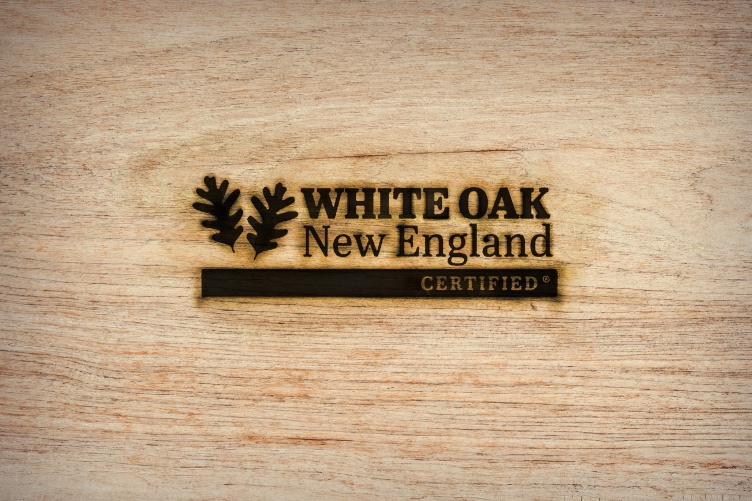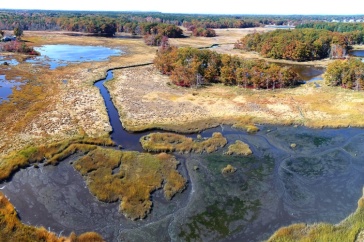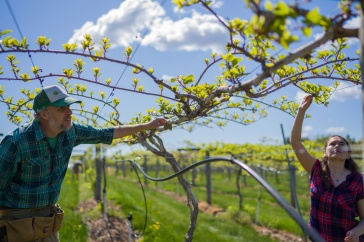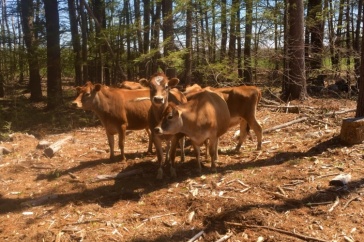
A collaboration between UNH Extension and UNHInnovation could boost the region’s craft beer and liquor industries with a distinctive “made in New England” taste and certification to support it. The initiative aims to use white oak from New England to produce casks for the beer and spirit industries. Chemical analysis indicates these trees have different levels of key compounds that impact flavor compared to the same species grown in the Midwest, which comprise the majority of barrels produced for spirits.
To help producers capitalize on that taste distinction, the United States Patent and Trademark Office has issued UNH a first-of-its-kind registered certification mark that will be used to label and market white oak sourced in New England.
“Introducing this product supports the local forest industry, which is an important part of the region’s economy and identity.”
“One of UNH Cooperative Extension’s many goals is to strengthen the state’s key industries,” says UNH Extension forestry industry specialist Andy Fast, who is leading this initiative. “We started this project as an out-of-the-box way to increase the demand for local, niche forest products. New England white oak is not currently a source for wood barrels. Introducing this product supports the local forest industry, which is an important part of the region’s economy and identity. We’re very excited to have this certification mark officially registered.”
White oak’s native range stretches across much of the eastern and central United States and within this range there is variability in climate, soils and growing conditions; that variability affects the chemical attributes of the wood, including the concentration of lactones and tannins. Beverage producers can use these different concentrations of lactones and tannins to affect a product’s flavor, aroma, color, mouth feel and other characteristics.
Fast, in conjunction with a French cooperage, performed gas chromatography-mass spectrometry analysis on white oak from New England, the first known chemical analysis comparing the oak species to those from other regions. His analysis confirmed that there were discernable differences in the chemical characteristics that could affect the taste of a beverage, including fewer tannins and more of a specific chemical compound called trans-whiskey-lactone, relative to other sources of American white oak. Identifying chemical differences between oak in different regions allows producers to craft their products more deliberately and market their product based on regional differences.
Although American white oak barrels are currently marketed as an undifferentiated product, beverage producers often have particular regional preferences for sourcing based on the characteristics that they want for their products. Given the rapidly growing craft distillery and craft brewery industries, particularly in New England, Fast believes that there is a lot of potential in marketing New England white oak barrels in a way that differentiates them from white oak barrels produced in other parts of the country.
With the newly registered certification mark in hand, Fast, who’s collaborating with UNH Brewing Science Laboratory manager Cheryl Parker, is now working on proving the market for certified New England white oak barrels. There are several beverage producers that have already expressed interest in using certified barrels in the production of their products.
“My biggest challenge right now is getting the barrels produced,” Fast says. “Ideally, I would like to see them made right here in New England, but unfortunately, there aren’t any commercial cooperages left in New England that can construct the number of barrels that the beverage producers will need.”
The region’s last commercial cooperage closed in 1999. To address this market need, Fast is working with Tamworth Distilling, based in Tamworth, New Hampshire, on a grant proposal that will allow him to test the economic feasibility of a scalable model for manufacturing New England white oak barrels. “A revived cooperage industry will have benefits that ripple through the supply chain, from the loggers and sawmills, to the beverage producers, restaurants, breweries and consumers,” he says.
Beyond the white oak certification, Fast is also researching the viability of barrels produced from alternate hardwood species that are found in New England. He secured a small grant from the New England Society of American Foresters and went through UNH’s I-Corps training program— a National Science Foundation initiative that fosters entrepreneurship, which is administered by UNHInnovation — to test beech, red maple and yellow birch as barrel material.
“This work is all about helping people recognize the connection between cutting trees in a responsible way and turning those resources into things we all use and enjoy,” says Fast.
-
Written By:
Chelsey DiGiuseppe | UNHInnovation
-
Compiled By:
Beth Potier | UNH Marketing | beth.potier@unh.edu | 2-1566


















































